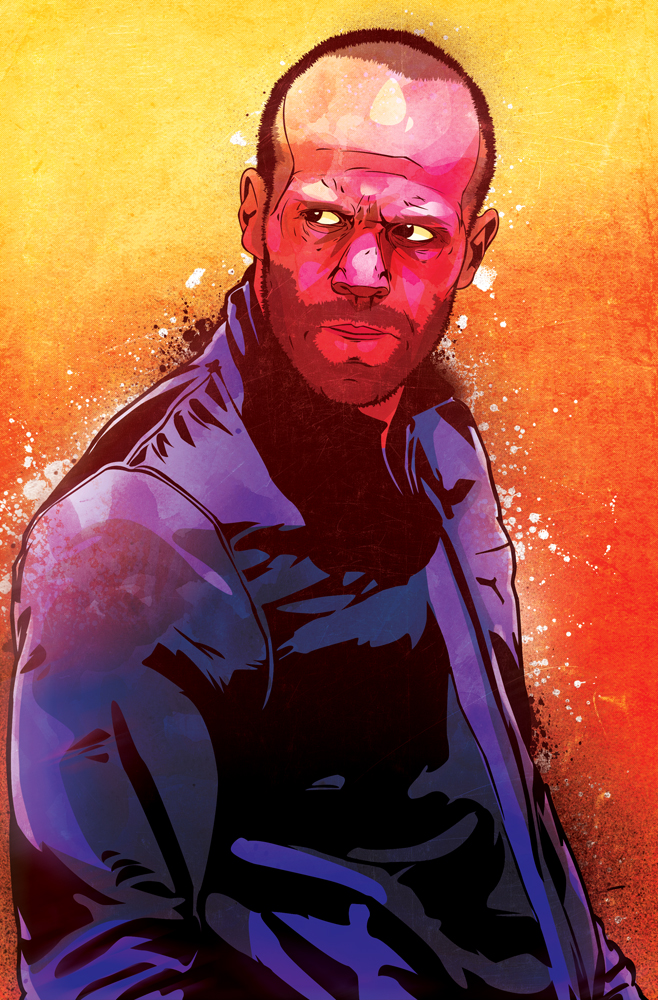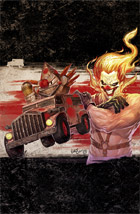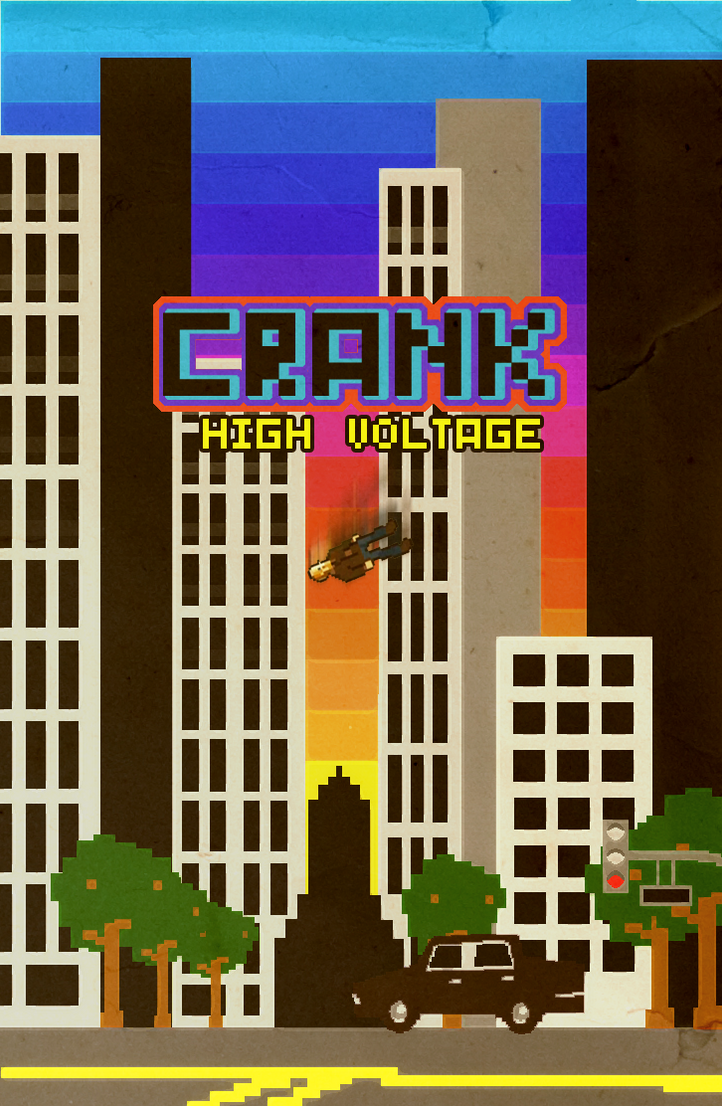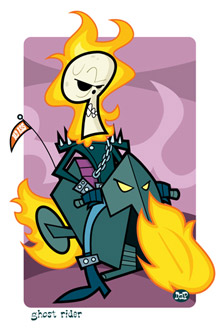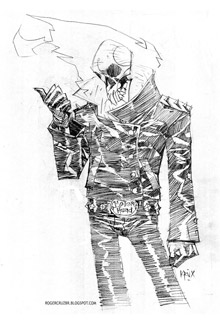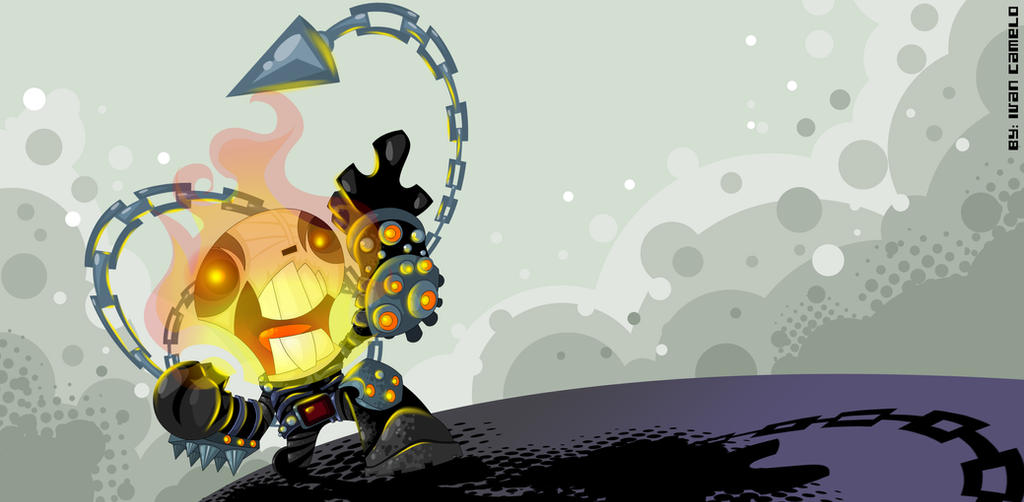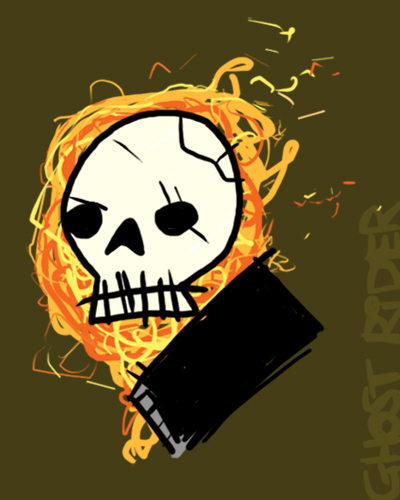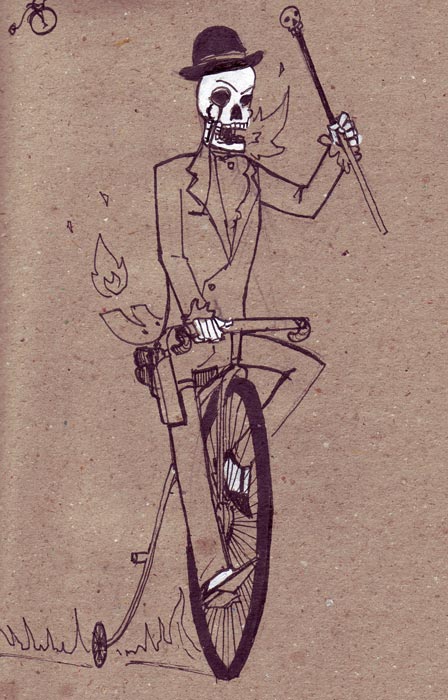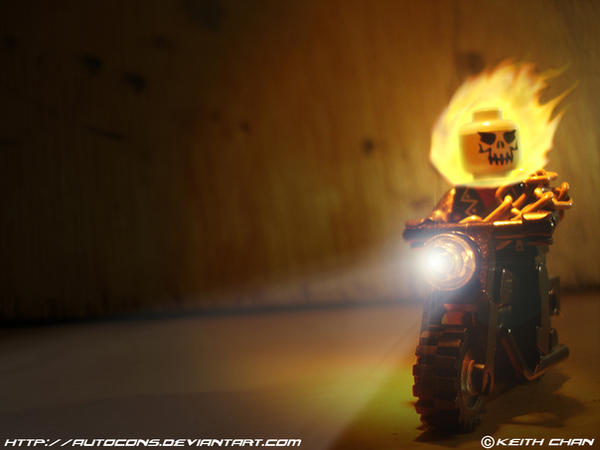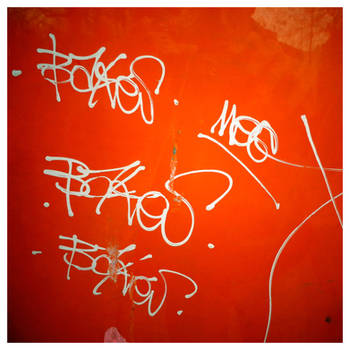Movies featuring the latest in high tech digital effects, eye-popping CGI environments and ear-splitting surround sound, are often described as “pushing the envelope.” But they’re mega-million-dollar productions that are delivered back to the studios by the filmmakers precisely as pre-ordered. Rarely is there danger of disaster, so what envelope has been pushed?
“Envelope-shredder” might be a better designation for Brian Taylor...
Who, usually in collaboration with partner-in-mayhem Mark Neveldine, has given the world such films as Crank, Crank: High Voltage, Gamer, Pathology, and recently Ghost Rider: Spirit of Vengeance.
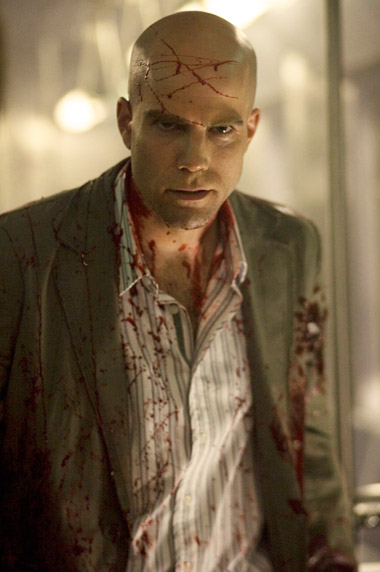
Road to Comic-Con 2012
These are movies that dance on the razor’s edge of what the studios will release, having already made “Neveldine/Taylor” jump through flaming hoops of Byzantine financing just to get them made.
These are movies keeping alight the torch of the best of DIY independent film storytelling – of providing us outrageous thrills and sardonic politically incorrect fun, and keeping one step beyond what “the suits” ordain as acceptable.
Brian Taylor and Mark Neveldine are not graduates of the prestigious USC or UCLA film schools, but of the more modest L.A. Film School located on Sunset Boulevard. They entered the industry as camera operators before moving up as cinematographers, screenwriters, directors and producers in rapid time by Hollywood standards. This “know it/do it all” background shows in their films. There’s a “we can do anything” spirit that pervades every crazier-than-the-last action sequence and loopy plot twist.
As writer-cameramen-directors, they manage to tell the most preposterous story believably, show it to us convincingly, and guide us to the next level of madness seamlessly.
These are “do what’s never been done before” guys, necessitating them also being mostly “do it yourself” guys.
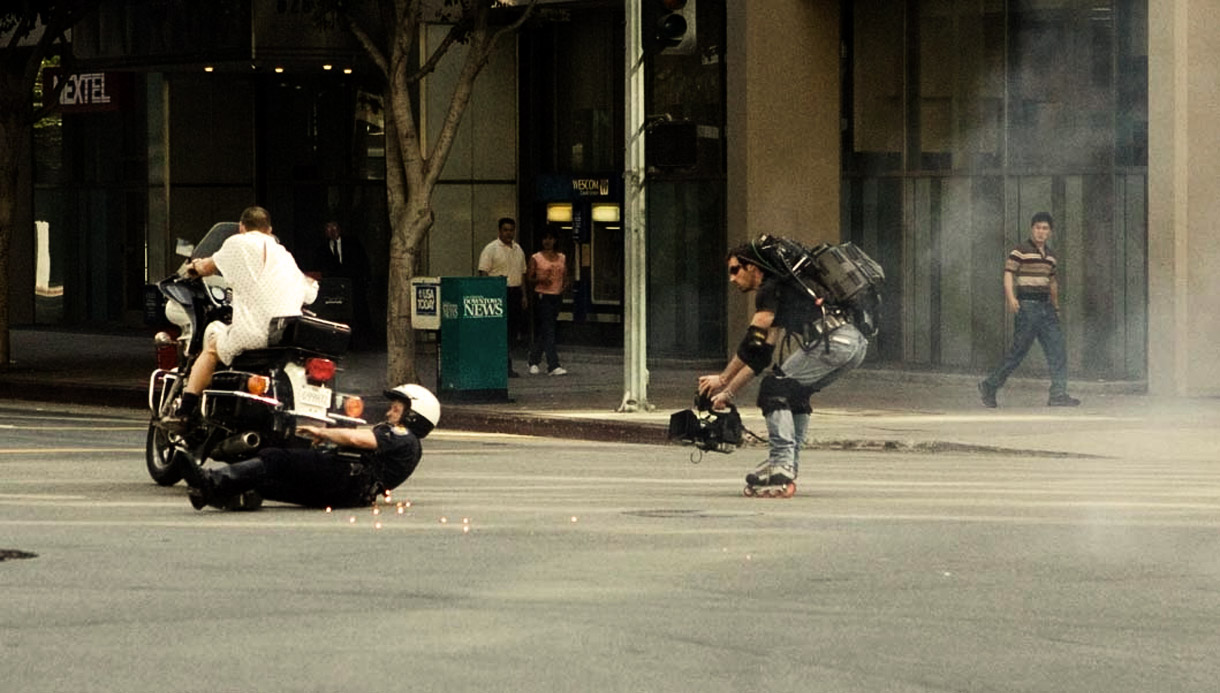
For example:
Mark Neveldine invented a device
allowing him to film while
rollerblading through the fight scenes.
The first Ghost Rider translated the Marvel comic book to film, while still “reading” like a comic book, i.e. its cartoonishness drained it of any genuine dramatic thrills. In Ghost Rider: Spirit of Vengeance, the Neveldine/Taylor team takes the helm and propels the story into another world with the stunning artistry in the transformation of the Ghost Rider into blazing skeleton as well as the fiery upgrade given his bike providing the visceral punch missing in the original. Neither the comic book sensibility nor the film medium’s magical ability to lend a “reality” to the surreal narrative is lost.
This movie, even at its craziest and most bizzare, looks and feels somehow real. The dramatic tension of a great "movie-movie" remains despite the surreal elements. The future of successful genre films depends on more storytellers learning how to mash-up and blend story elements and story styles of action films, comic books and videogames as inventively and seamlessly as evidenced in GR:SOV. I loved being launched into scope mode for a little MW sniper action.
With so much pre-tested pre-programmed confection coming out of Hollywood, it’s heartening to know there continue to be the DIY any way you can mavericks at the edges of the filmmaking community, artists striving to realize their visions without benefit of test-audience numbers. There have always been genuine “envelope-pushers” at the edge of the industry, risk-takers like Sam Peckinpah and Ken Russell, whose efforts sometimes fell to foolishness, but whose triumphs soared to the heights of transcendent holy madness.
Those “mavericks who dared” have passed their still burning torch of righteous outrage to new masters like Tarantino, Rodriguez and Neveldine/Taylor.
It has been quite an amazing ride so far. With Twisted Metal and CrankX 3D possibly on the way, this blazing train on devil tracks train has no signs of stopping for any of the usual stops on its way to hell.
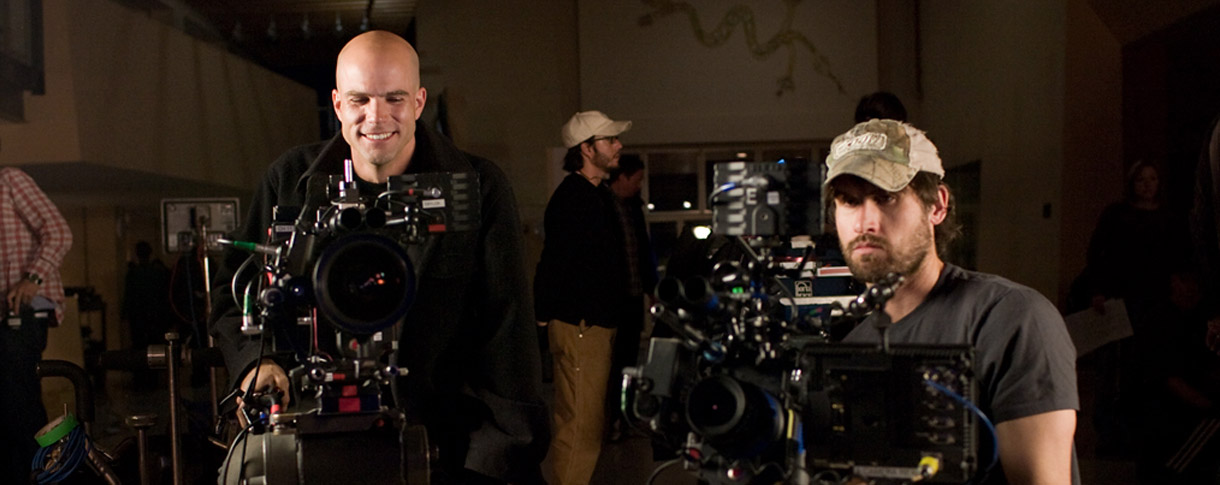
An interview with:
Brian Taylor
How much of an overall design or look do you have in mind for a production before interaction with artists, in both on-screen art and ad campaign art? And how much do you leave to the artists to blow you away with their own ideas?
We have almost no input on ad campaign art before the fact. Guys get paid big to come up with these campaigns. But once the first set of samples or options are generated, we have always been very vocal with our input. I have had detailed collaboration with the ad guys on everything from slogans to colors to font choices to layout and strategy. They don't always listen, and often they are right not to - but we give our two cents nonetheless.
In terms of the production itself, we always come in with a great deal of visual work done. for instance, on ghost rider, the new, darker look of the title character was completely conceived walking in the door. We had texture samples, references and fully developed concept art. I also came with complex and detailed look books for each character. These documents and images became a bible for the production, a launching off point for the amazing work brought in by the various departments. Probably not all directors do this, but I can't imagine walking into a movie waiting for other people to tell you what it will look like.
What advice do you have for young artists intent on getting their work seen by producers, etc, and breaking into movies and videogame production?
Comics are a great place to start - even self published. The movie business is still a sucker for anything with panels. Also - directors these days are so much more accessible than ever before via social media. Why not create a portfolio of concept designs or storyboards based on a director's past movies and send it to them? Most guys I know would think that was pretty cool. If the work is amazing it could land you anything from a retweet to a job.
What was the biggest challenge for your artists in trying to amaze audiences with Ghost Rider 2? How do you exceed audience expectation when they’ve already seen the burning-skull rider in GR1?
The first GR fell flat for many people largely due to the design. The rider didn't look real, or scary. Tthis was despite a lot of very talented - and even Academy Award winning - people involved in the final product. If there is no passion and point of view in the design stage, it's never going to get there. So the big challenge for us was to create a new GR that was more visceral, realistic, weird and terrifying.
Can you talk a little bit about the over all art direction of this film?
We are not big fans of sets. We prefer to take real locations and repurpose them if necessary. A classic example of this is in Ridley Scott's Blade Runner - the ultimate movie in terms of design - where they reimagine LA's union station as a police headquarters. Aalong the same lines, on Gamer we turned a remote New Mexico gypsum mine into a futuristic prision. There were no structures, just endless miles of pure white carved out of the earth. After all, where would the prisoners go? This concept of repurposing, I believe create more natural and lived-in environments. They look like useful places.
We took a similar approach on GRSOV. The art direction was inspired directly from the real Eastern European and Turkish locations we shot in.
What is the most important attribute an artist can cultivate when working with directors on films?
A great film designer is always walking a line. The most important thing is to understand the director's point of view and vision for the movie. Your job is not to build your reel, but to help them to make the movie they see in their head and feel in their heart. Sometimes this means giving them exactly what they ask for, even if it's not your personal taste. But the great ones are able to really understand a director's concept and take it farther - you are giving them what you know they want, even if they don't know it yet.
What is your special connection to comics, videogames, action & genre films, and all generally cool things?
My life revolves around this stuff. And it seems like every year the line between them gets fuzzier. Comics, movies, games and the internet are quickly becoming one. The challenge to stay at the bleeding edge is everything.
